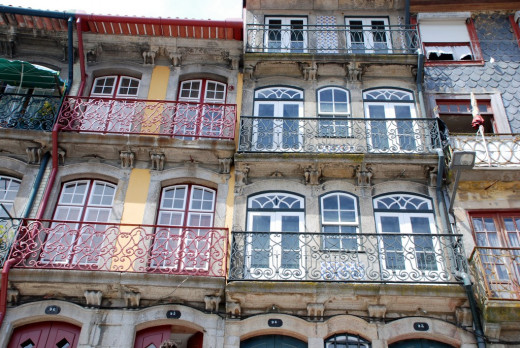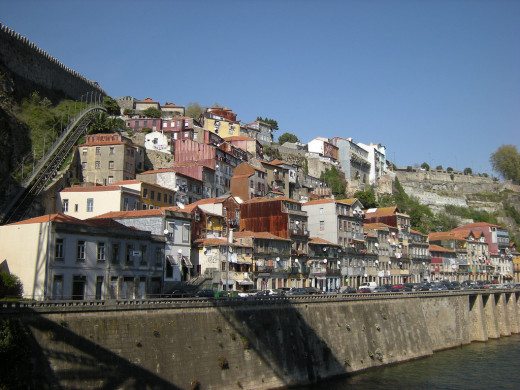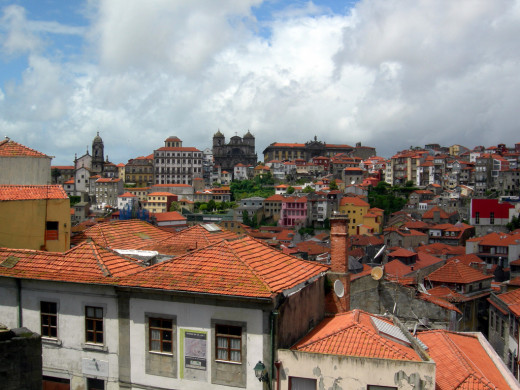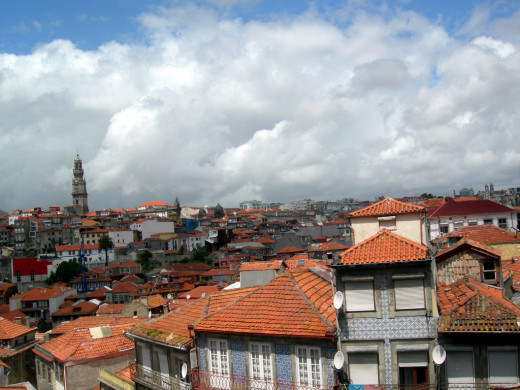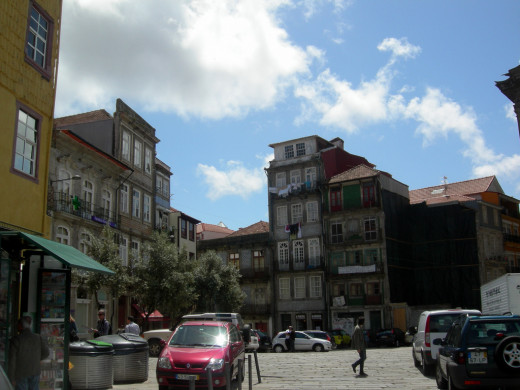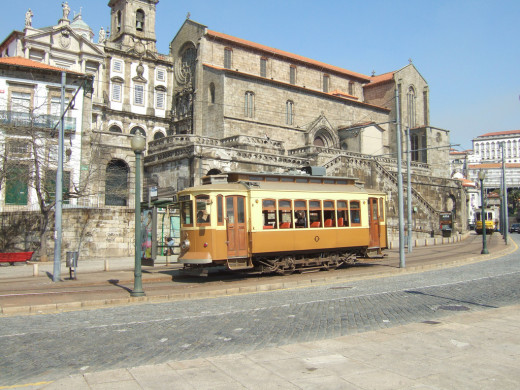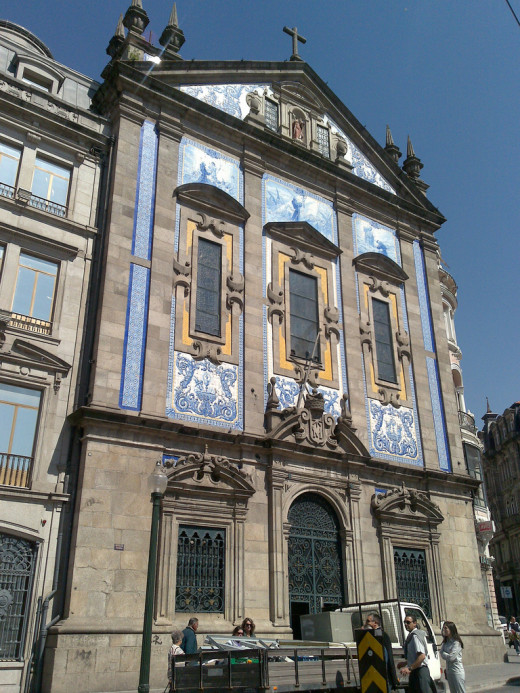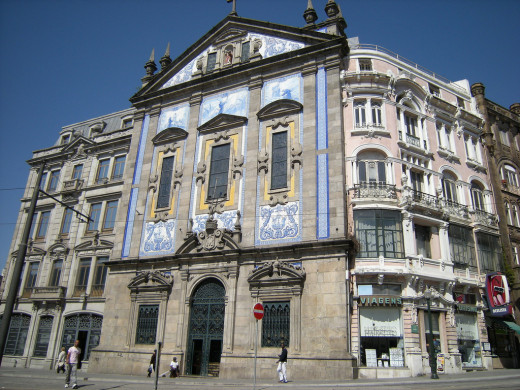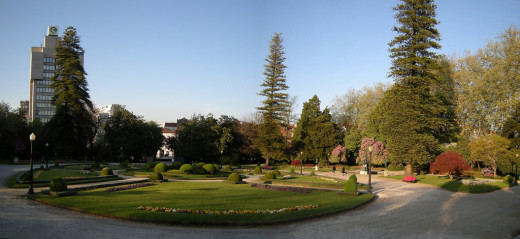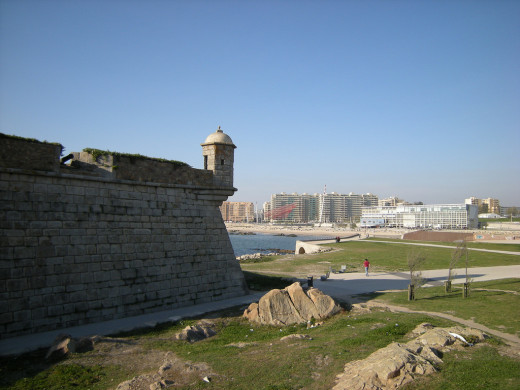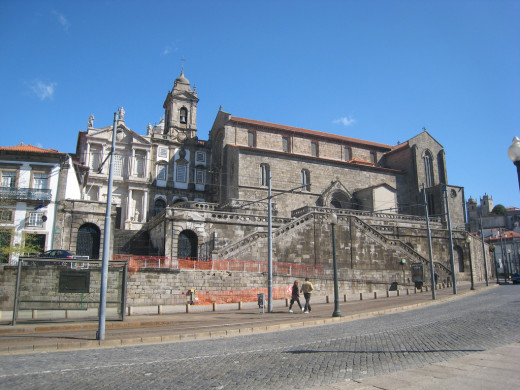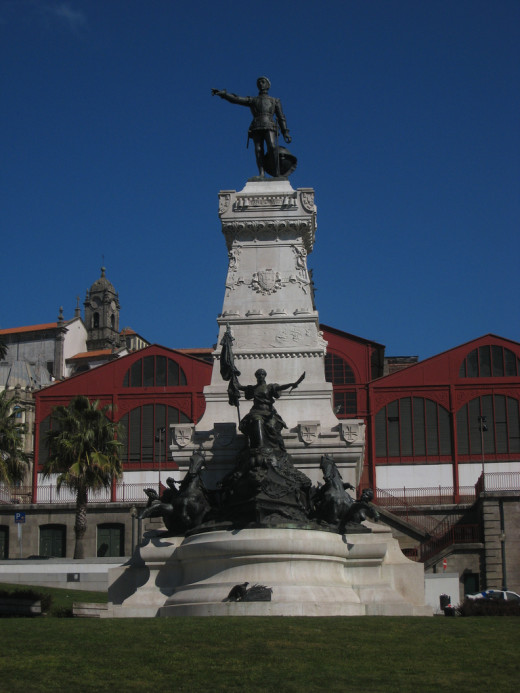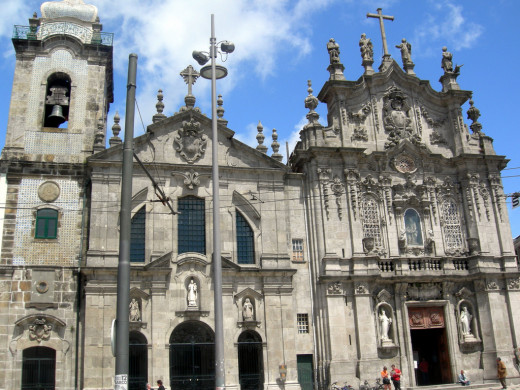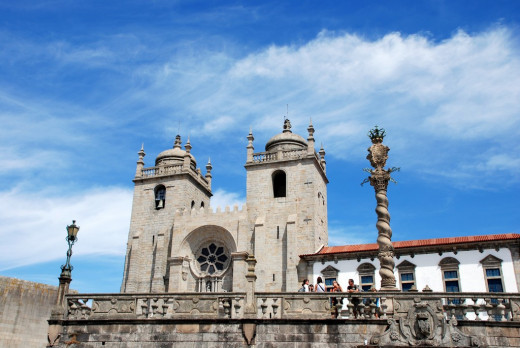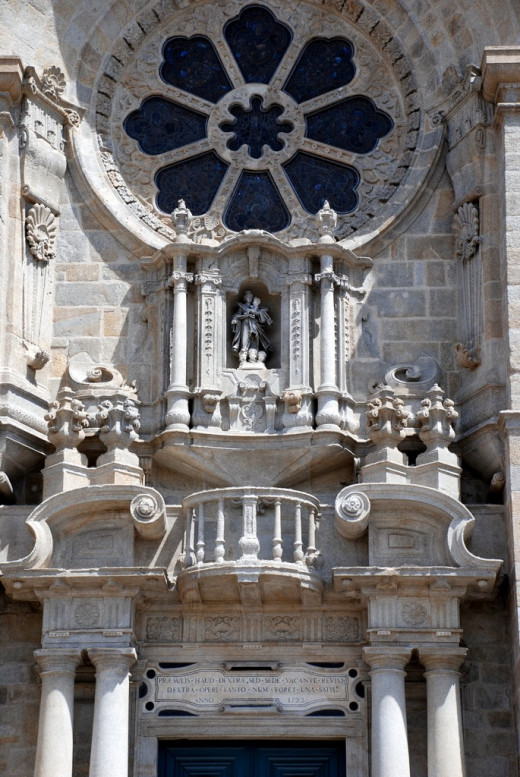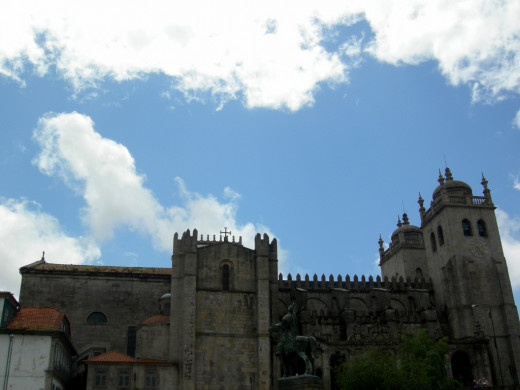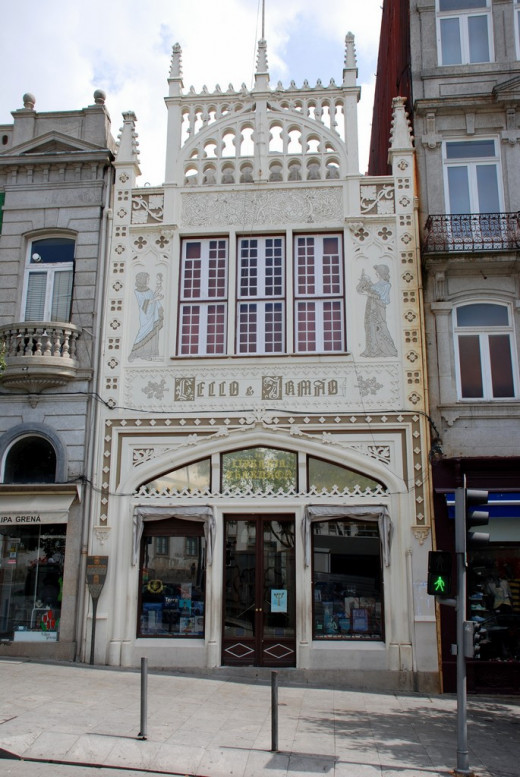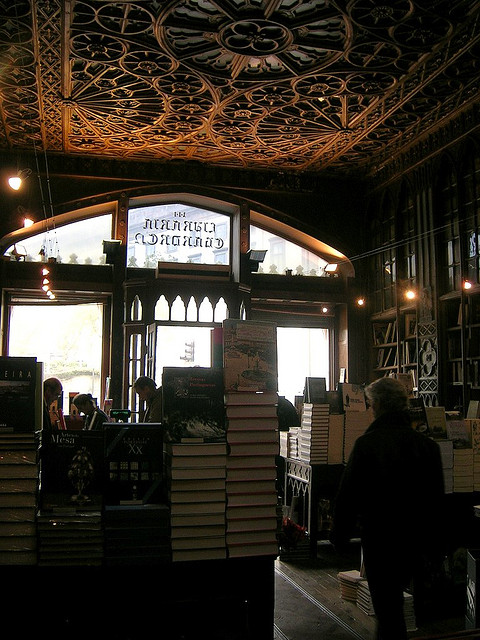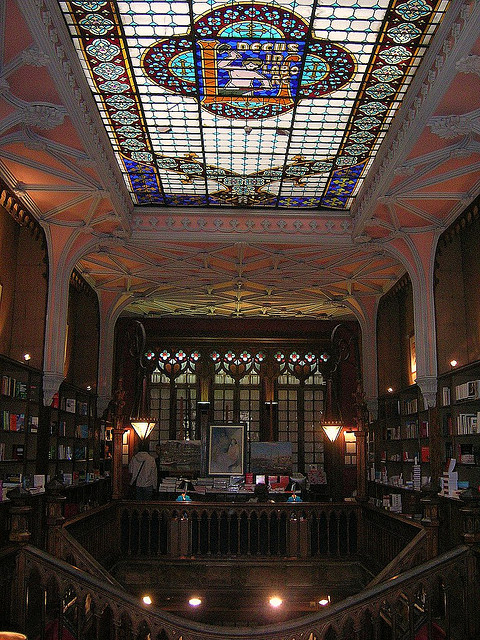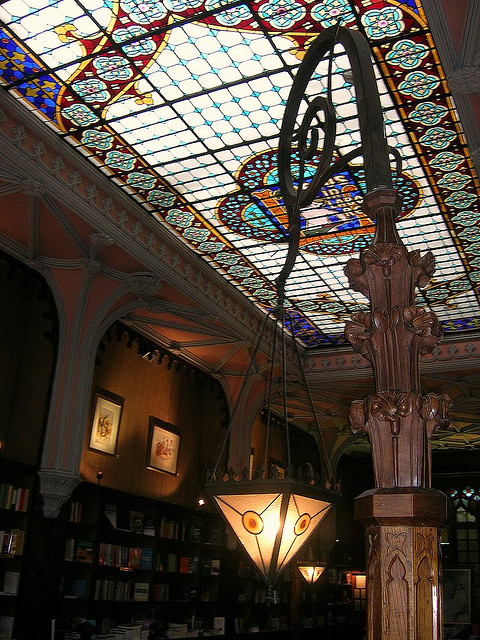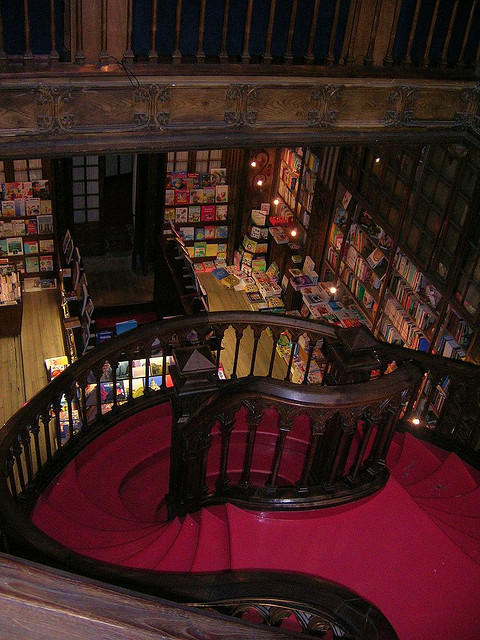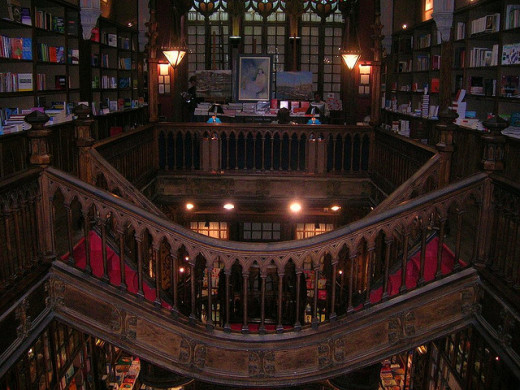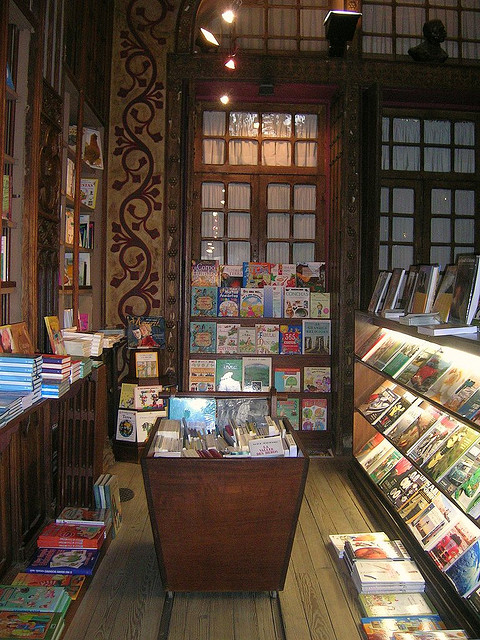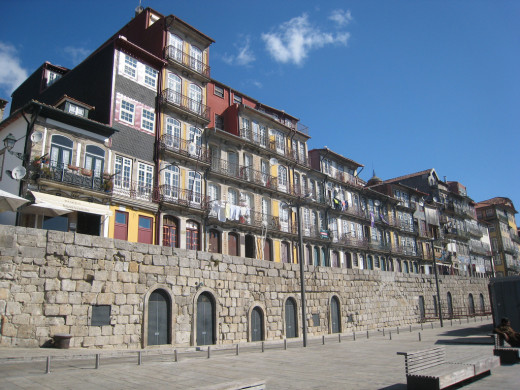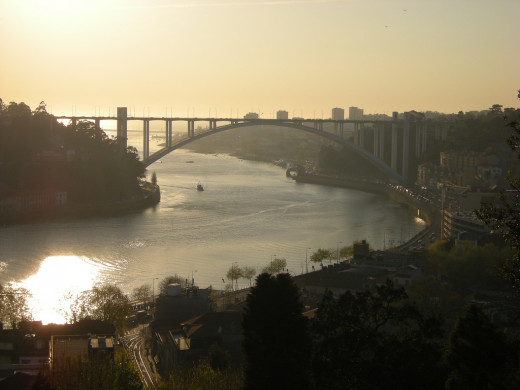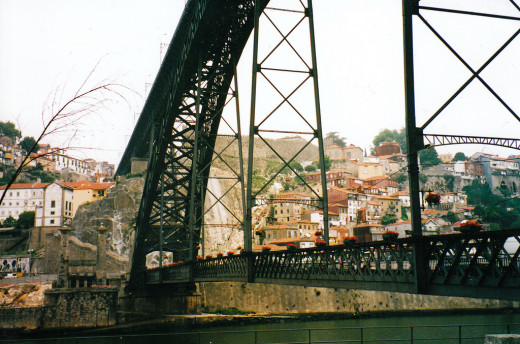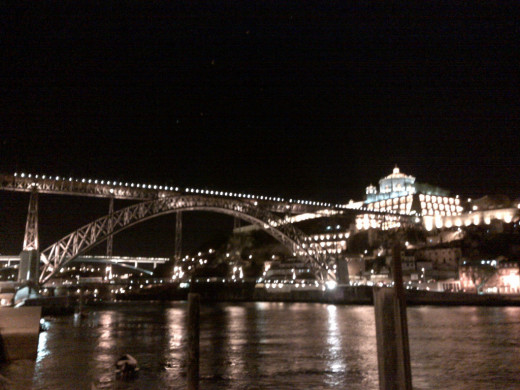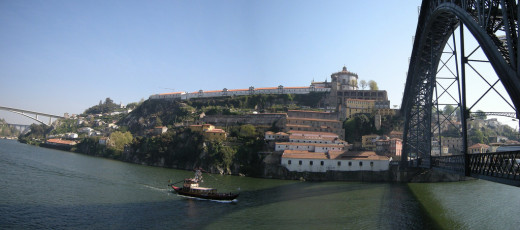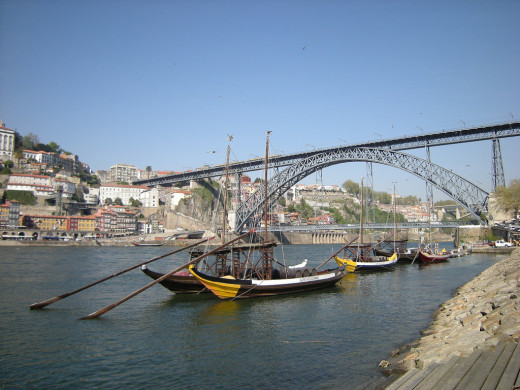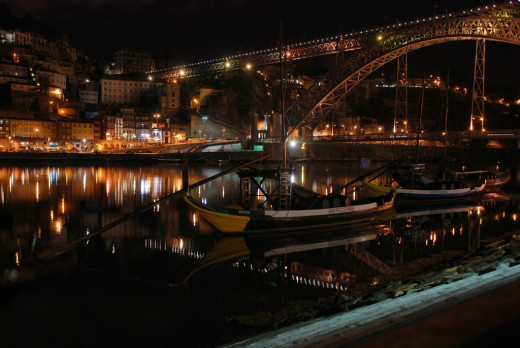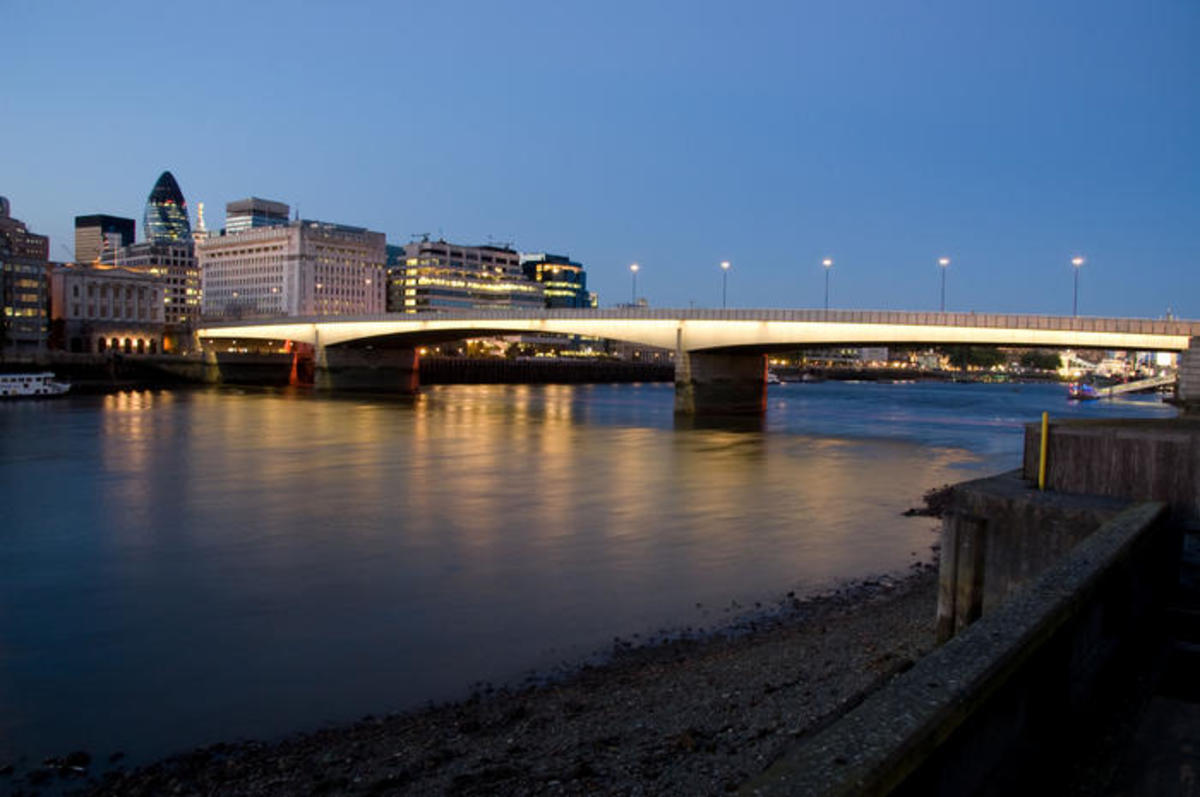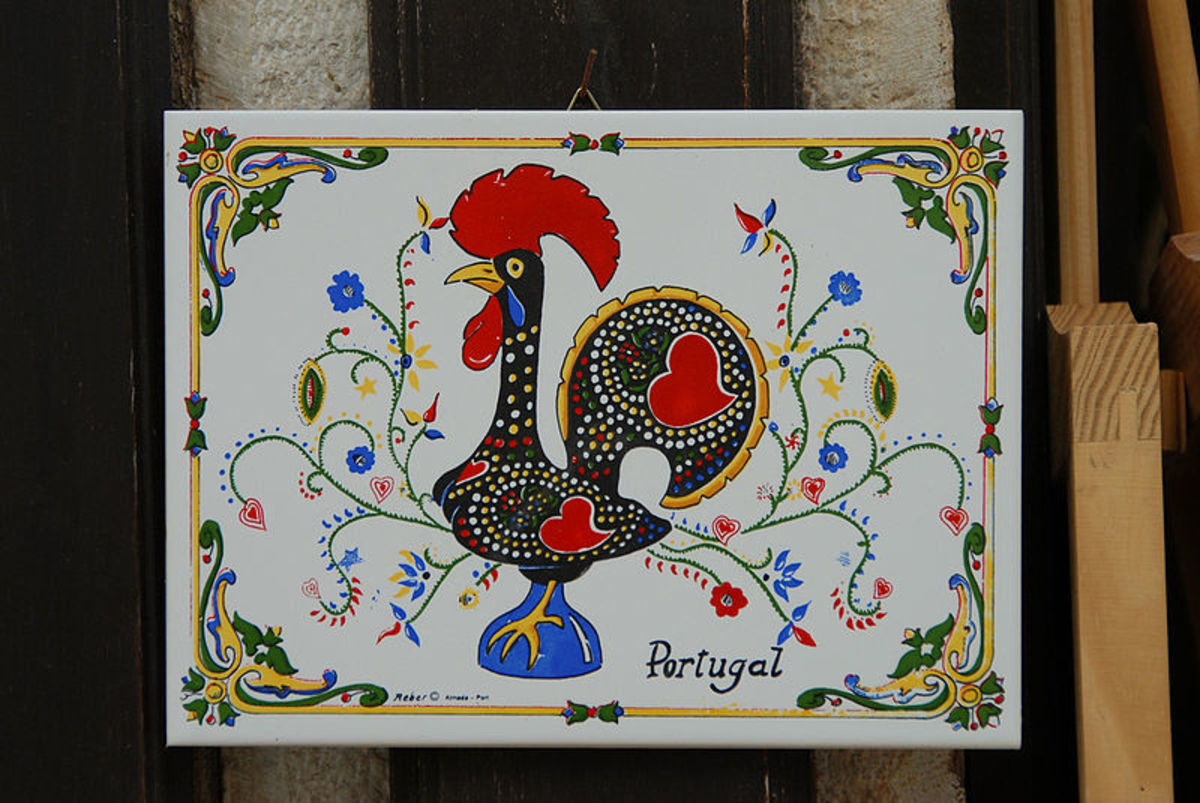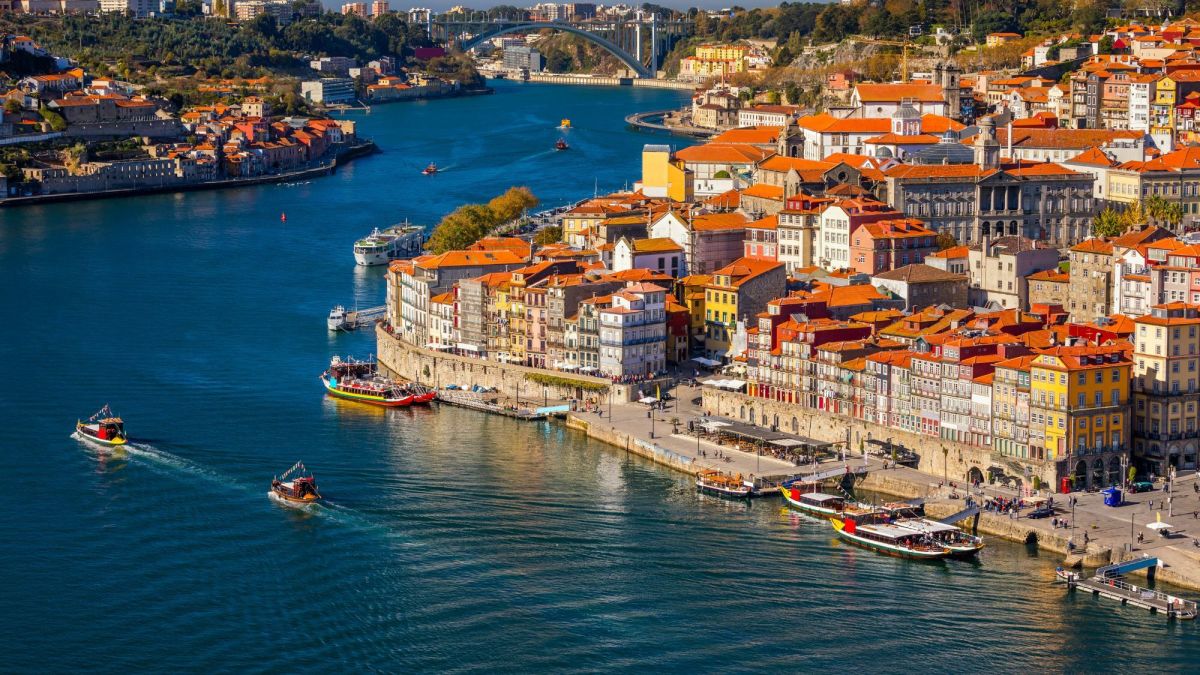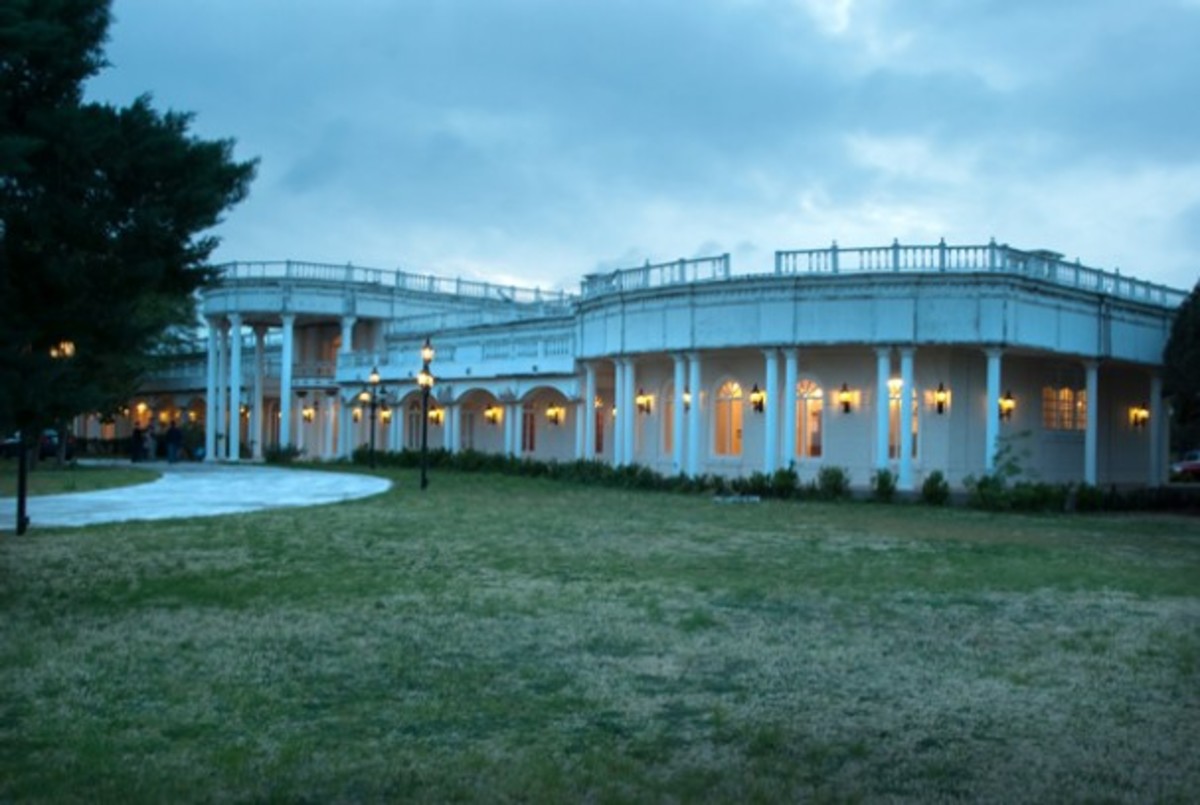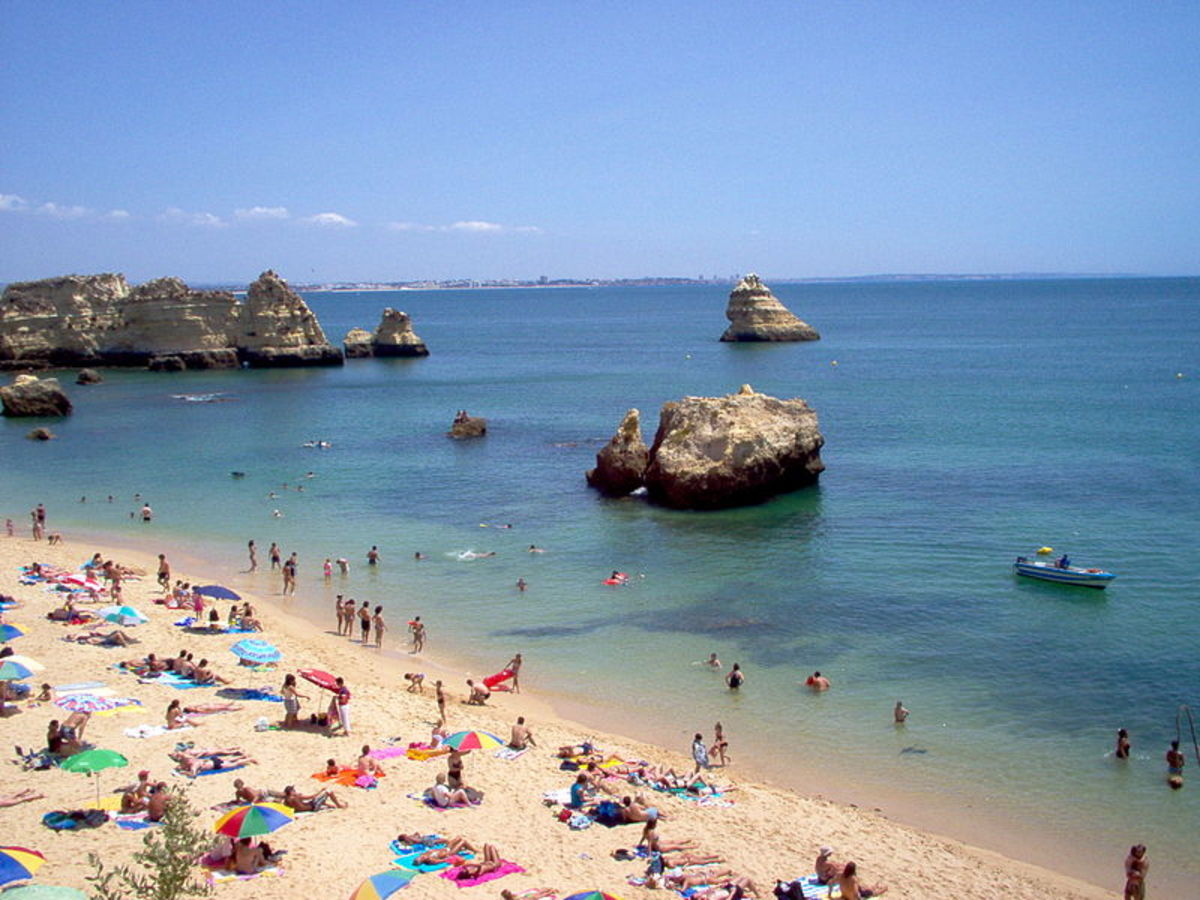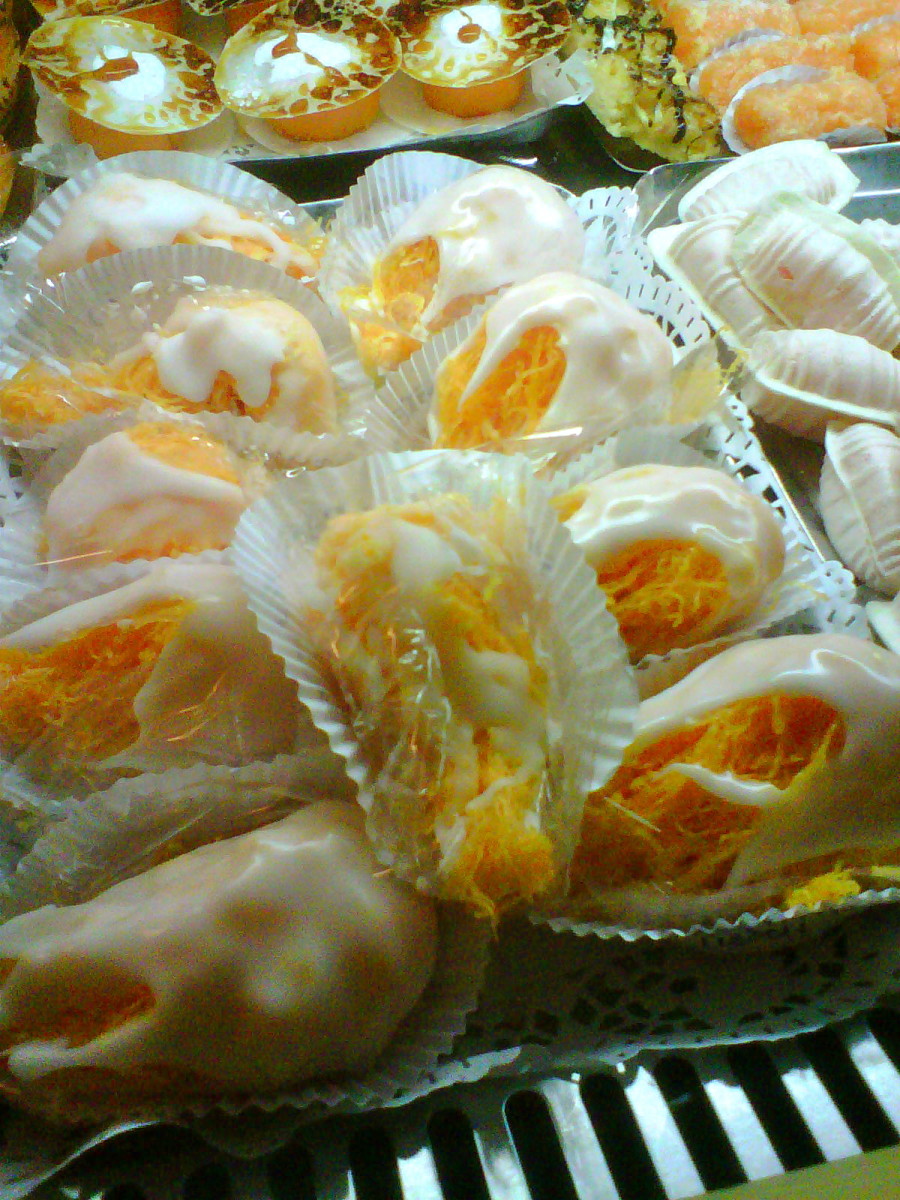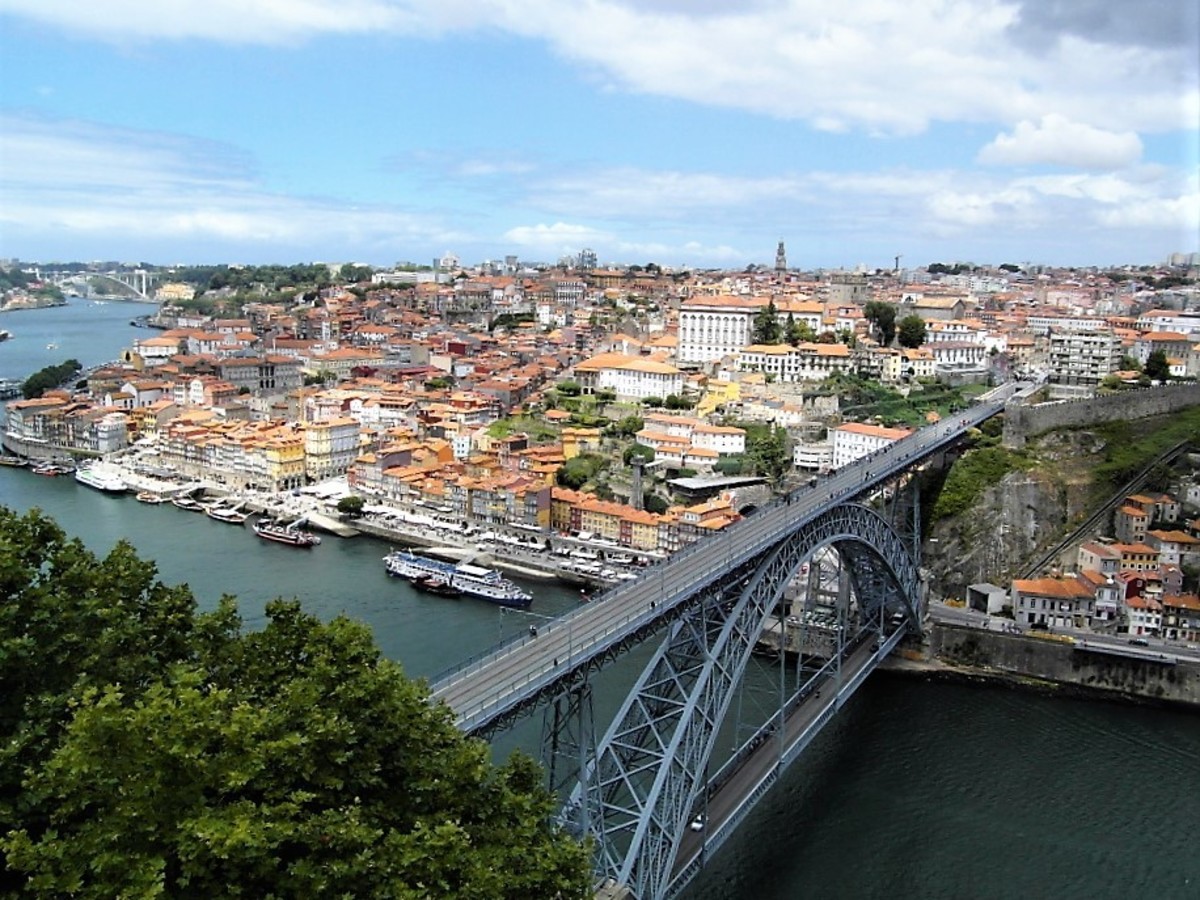Travel information: Visiting Porto
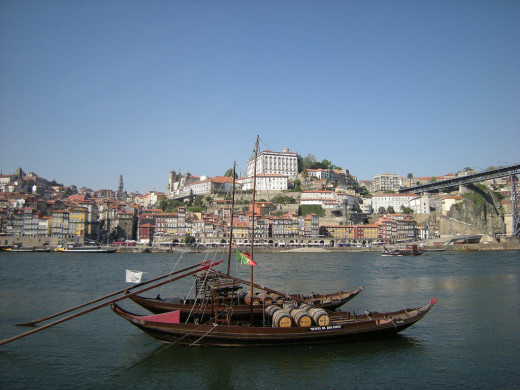
The Invincible City - Invicta
Only in recent years I have actually started paying more attention to Porto. I guess it's what happens when you grow up near some place, it's always there, so near, that most often you don't take the time to really know it.
In recent years, maybe because I'm quite far away and I can't visit the city whenever I feel like it, and also because apparently visiting Porto is such a trend nowadays, I started thinking about this city so familiar to me, yet with so many secrets still to find out, and I realized that it is nothing other than an amazing city. There are so many wow factors that a few days aren't enough to discover the second biggest city in Portugal, the Invincible city, with all its traditions, the old and the new standing side by side, welcoming everyone, because that is one thing about Porto and most of the Northern region of Portugal, you will probably find in few places, the hospitality, the welcoming of other people, making up for the cold weather, you find in Porto very warm hearts.
So, let's get to know a bit about this city!
A bit of history...
The city is located in the North of Portugal and it's one of the oldest cities in the country. It was built along the hills overlooking the Douro River estuary. Its origins date back to the Roman period, when it was called Cale or Portus Cale, hence the name Portugal, after the name of one of its first cities.
The County of Portugal, that was held in vassalage to the King of Leon and that was the origin of Portugal, was actually made up of the area surrounding Braga and Porto, the northern litoral of the country. It was from here that a country was forged and that the conquest of the rest of Portugal from the Muslims started. This shows a bit of what Porto is, the so-called "much old, noble, loyal and invincible city", throughout history was always a pillar to the country, made up of good, strong, courageous men and women who didn't mind facing the odds, so long as they were standing for what they thought was right.
Here was born Henry the Navigator, responsible for early development of maritime exploration and mentor of the Portuguese Discoveries. Later on in life he came to ask of his fellow townspeople help for the conquest of Ceuta. To help in the war effort the townspeople gave Henry, his soldiers and sailors all the good meat there was in the city, being left only with entrails of animals to cook, the people from Porto came up with a dish that is now a symbol of the city - Tripes Oporto Style.
Porto and its surrounding area - the Douro Valley - are also responsible for another delight to the senses, Oporto wine - a fortified red wine, sweet and velvety.
The city played a big role fighting off the Napoleonic troops during the 19th century alongside the British, but not long after they chased out French, they also rebelled against English presence.
Meanwhile, during the 1820's and following the European Liberal trend a civil war broke out between the Liberals and those keen on near-absolutism, led by Prince D. Miguel. In the end liberals won round 1. But given the actual heir to the throne was in Brazil and that the next in line to succession was his daughter, that was still a minor, the uncle - Prince D. Miguel - acting first as regent, eventually took the throne and immediately rejected the liberal constitution, reigning as an absolut monarch. This led to another civil war. The city of Porto stood by the rightful heir - D. Maria - whose father, D. Pedro, came back from Brazil to fight for his daughter and the country. Eventually, D. Miguel lost the fight, but not before Porto had to undergo a siege of 18 months by D. Miguel's army, which the city resisted bravely, coming out unvanquished, again proving the valeur of its people.
But the city is much more than fights, sieges and conquests, it's a city of entrepeneurship, it's a city of hard work and business,
The whole city, its buildings, streets, people, tell the history of centuries past and days to come, in the old houses, its narrow streets, its majestic palaces, its monuments, its churches, the river that flows through it all, the bridges and their industrial design... The city is a picture, coming alive to tell us its history. And Porto is not just about the old, it is about people coming together, new ideas, both business ideas and creative ideas of art and music and dance and whatever we can think of, it's about looking towards the future, all the possibilities in one place and then having a nice evening just looking at the ocean...
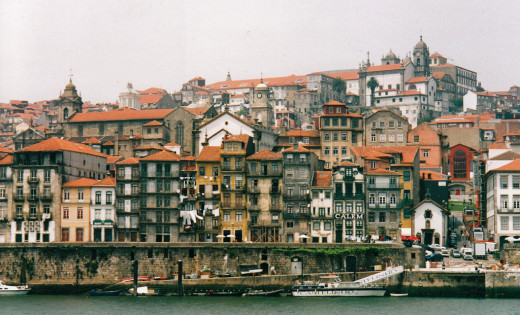













Walking around - here and there
The city itself is a monument, the historic center was classified as World Heritage by UNESCO, back in 1996 and it is absolutely delightful just to take your time enjoying the city, walking around and looking here and there for the most ordinary amazing things, a house, a balcony, the way a narrow street snakes through the buildings.
But the extraordinary is also around each corner. Porto has so many wonderful places worth visiting that it's impossible to walk through all of them. Places such as the Prince's house (Casa do infante) which is supposed to be the birthplace of Henry the Navigator and that was built around 1354; the Cathedral, an imposing Gothic building dating from the first half of the 12th century; the 19th century Maria Pia Bridge built by Gustav Eiffell and Théophile Seyrig, the last of whom was eventually responsible for building D. Luís Bridge; the 19th century Stock Exchange Palace, that bears witness to the entrepreneurship nature of the city; the Clérigos Church with its tall bell tower, a symbol to the city: Lello Bookstore, one of the oldest in the country and for sure one of most beautiful in the entire world; the House of music, a major concert hall space, with its highly acclaimed design. The list is endless and priceless.
Then you have, the new... Because Porto is not just monuments and narrow streets. The Foz do Porto is a beautiful place outside the historic center, it is where river Douro meets the Ocean, where you can enjoy a lovely walk at sunset, smell the ocean breeze and delight yourself at one of the many promenades. It is a place for the day and the night... Filled with restaurants and bars... It is a place for relaxing and for having fun... The fun goes on until the day is unravelling itself again in the morning...




Porto Cathedral
One of the oldest monuments of Porto is its Cathedral, located in the historic center, the Romanesque building stands tall over the city.
The construction started around 1110 and it was completed in the 13th century. Many alterations were done over the centuries to the original building, especially during the baroque period, although the facade remained much the same.
Perhaps it's the lack of decoration on the facade, perhaps its height or the two square towers, but the fact is that it's an imposing building. The rose window on the main facade is a beautiful work and the view of the rose window and the aisle of columns inside are truly breathtaking, as is the Gothic cloister, which can't be missed.
Stock Exchange Palace
Around 1840 the House of Commerce in Porto closed down, leaving the businessmen with a problem, since they had nowhere else to conduct their businesses. It was not unusual to find merchants and business men out on the street conducting their businesses.
So, in 1842 the construction for a new house for business started being built, a palatial building in Neoclassical style just beside the St. Francis Church. In fact the St. Francis Convent had been destroyed by a fire during the liberal wars, that spared the Church, so Queen Mary II, donated the ruins of St. Francis Convent to the merchants.
The construction took quite some time, although the structure was completed by 1850, the decoration took a bit more - more specifically until the 1910, year when finally everything inside and out was completed.
Apart from the building itself, there are several architectural details that are astounding and really worth our while, such as the Nation's Courtyard, with its large metallic octagonal dome with glass panels or the exquisite Arab Room decorated in exotic Moorish style.
Presently it entertains several cultural, social and political events and the Arab Room is usually the set to welcome personalities and heads of state visiting the city.
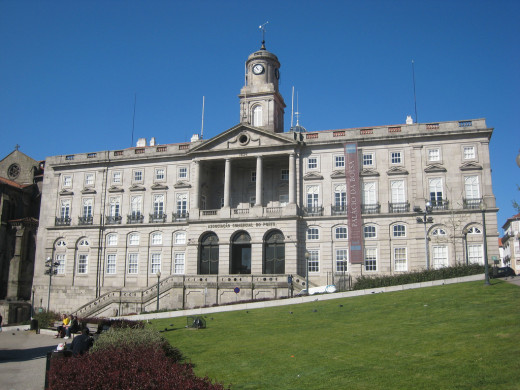







Lello Bookstore
In 1869 a former bookstore employee decided to venture and open his own business, the Ernesto Chardron Bookstore. He soon achieved notoriety since he become the first editor to publish books from renowned Portuguese authors like Camilo Castelo Branco and Frei Domingos Vieira. Unfortunately, Chardron passed away at 45 years old and his bookstore was sold and merged with others, but finally in 1894 it was sold to the Lello brothers, hence the name which it is recognized nowadays.
But the actual location of the Bookstore, at Rua das Carmelitas, only goes back to 1906, when the new building opened to the public. The Bookstore is unique because it preserves the old along with the new, it is an exquisite work of Neoclassical architecture from the early 20th century, taking us back in time, lending the reader, the buyer a bit more of magic, than what he actually gets from the books.
It has been praised all over as one of the most beautiful Bookstores in the world by the newspaper, The Guardian, by Lonely Planet and many others. It has also inspired writers, in the old days, names like Eça de Queiroz, Antero de Quental and other prominent Portuguese literature names gathered here, exchanging views and ideas. More recently it served as an inspiration to J. K. Rowling with her Harry Potter books, as she lived in Porto for several years and was familiar to the Bookstore. Moreover the Bookstore actual served as the scenery for some of the movies scenes, namely being the set for Flourish and Blotts, the store where witches all around bought their supplies.
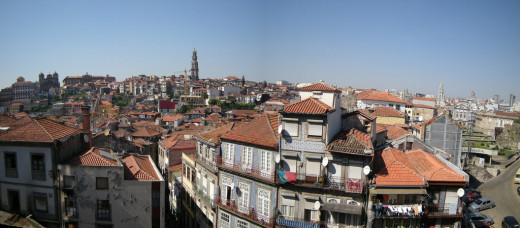
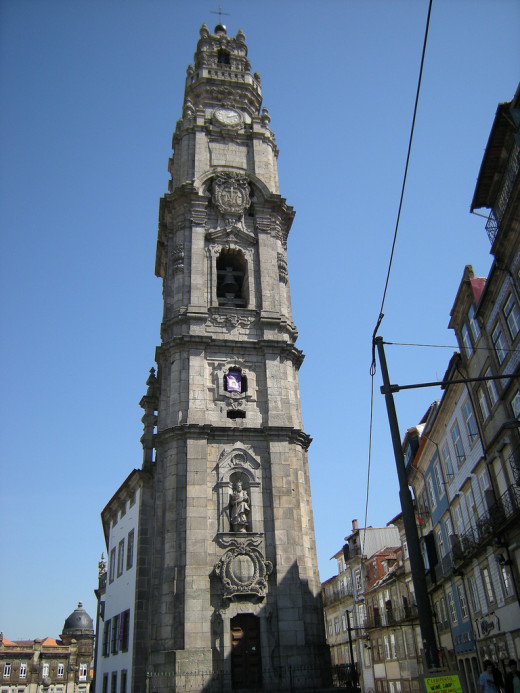
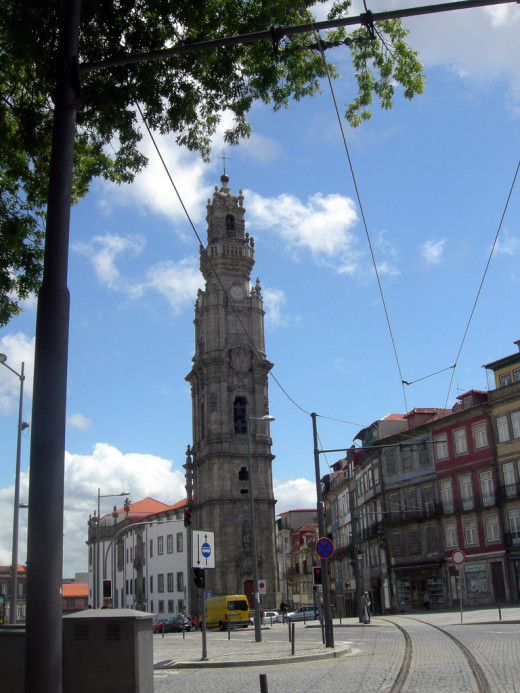
Clérigos Church
Clerigos Church dates back to the first half of the 18th century and mostly is known for its bell tower, which came to be a symbol to the city of Porto. It's easily recognized in Porto's landscape standing amidst all the other buildings.
Clerigos ( Clergy ) was a Brotherhood that was suppose to help clergymen in difficulties, but the Brotherhood had no headquarters. A vacant land, where hanged criminals used to be buried was donated, and the construction of the Church started in 1732. Nonetheless, it didn't go well, intrigues delayed the construction and eventually in 1745 an inspection to the site determined that the foundations to the front facade were not properly built. The result was that everything was to be undone and the building would once more start from scratch. It is one of the earliest baroque churches in Portugal with an elliptical floor plan.Three years later the Church opened for the first time to the faithfull, although it was much later that it was actually finished. Later on, another land behind the Church was donated and an Hospital was added to the set.
Finally, the missing piece, the last to be built, but the better known of the set that is Clerigos, the bell tower - the tower of Clerigos- the symbol of the city.
Originally there were suppose to be two bell towers, in the end only one was built. At the time of the construction it was the highest building in Portugal with 75 m in height and six floors, which can be reached by a spiral staircase with 240 steps.
The set of these buildings is the work of Italian architect Nicolau Nasoni, who has other works throughout Porto. Interestingly enough this appears to be a work of love, since for many years Nasoni wasn't paid for his work. At his request, he was buried in an unmarked tomb at Clérigos.
Allies Avenue (Avenida dos Aliados)
This Avenue is the most important in the city, near S. Bento Railway Station it is the center of the city and the symbol of its entrepreneurship nature. In one end we find the beautiful City Hall building. The Avenue stretches from the City Hall towards S. Bento flanked on its side by exquisite buildings that bear witness to the prosperity of the city.
The Avenue is named as an homage to the allied countries that fought together during the 1st World War.
If each city had a living room, this Avenue would be Porto living room, it hosts all sort of events, including spontaneous ones. When the people want to celebrate, to demonstrate, to get together for some reason, this is the place they come to.
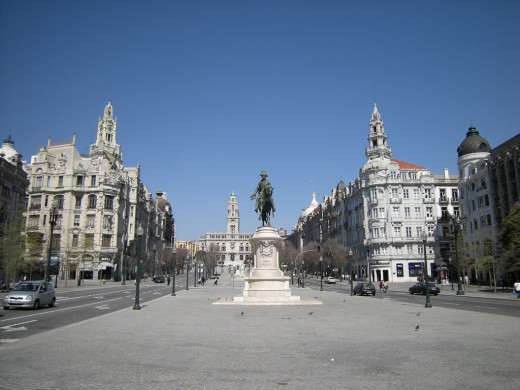
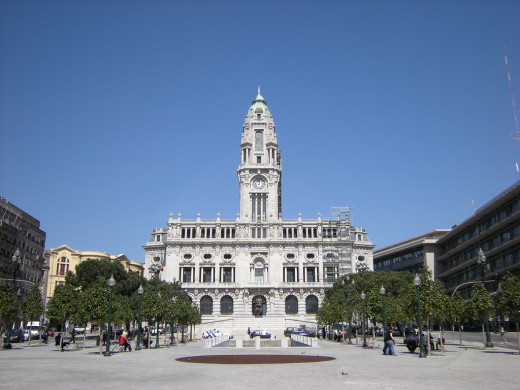
House of Music
The House of Music is an exquisite design by Dutch architect Rem Koolhaas. It was suppose to be built by 2001, but actually it was only finished in 2005. It is located near one of the main traffic and business center of the city and since its opening it quickly became a reference in the country's music scenario, providing amazing concerts all year long. It is a major concert hall, providing concerts for all types of music, from classic to rock.
But it is not just music that is acclaimed in House of Music, but the House itself. Although the extra hours of construction and the extra cost of the building, due to its engineering challenges, it is now one of the icons of architecture in Portugal. The House of Music design was accalimed worldwide, its unusual shape brings together art and reason, the flow of music.
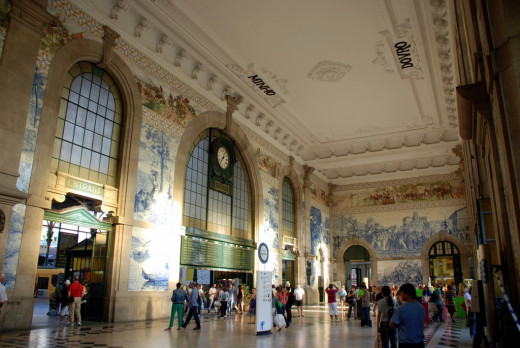

St. Bento Railway Station
This is the railway station in the center of the city and it is particularly worth a visit due to the entrance hall that features tiled walls from floor to ceiling, that depict scenes of Portuguese history, such as the conquest of Ceuta or the Battle of Valdevez, alongside with beautiful landscapes and the history of railways.
The station was built on the site of 16th Monastery of the Benedictine order. The monastery was destroyed by a fire in the 18th century and although rebuilt, it soon fell into a grave state of disrepair.
Porto Railway Station was located too far off the center of the city and there was need to expand the railroads and sort this problem. By the end of 19th century it was decided to use the location of the damaged Benedictine Monastery to build the new Railway Station. Although the railway started being used in 1896, there was no actual building to provide the necessary burocratic services, apart from some temporary installations. That being said it was urgent to sort this problem and given the chance, it was thought better to cluster other services in the same building, such as the post office and others, which could benefit from proximity of trains.
After the first projects, finally in 1900 the king D. Carlos I laid the first stone and the works started, but the projects suffered quite sme changes and it wasn't until 1916 that the building was completely finished and opened to the public.
It is interesting to know that this Station is the Western terminus of the Douro line, a beautiful railway that is really a nice trip for those visiting, since most of it runs close to the Douro river, offering scenic views of the river and the valley. It is said to be one of the most beautiful train journeys in the world.







The riverside and the bridges
The riverside called Ribeira is a beautiful area of Porto, it evokes the past in a colourful way. It was where the city turned to the river. Once a place of hard work, it is now a place to have fun in one of the many cafes, bars and restaurants, many of which have live entertainment many days of the week.
It's a pleasure, also, to enjoy the river view sitting at one of the promenades or walking around the narrow streets looking at the peculiar houses of Ribeira.
Then we can look towards the river, to the boats passing by, to Gaia on the other side and, of course, to the bridges that master the landscape.
Porto has six bridges that connect the city to Gaia - to the south, on the other side of the Douro river, all six are amazing engineering works. Freixo bridge, S. João bridge, the Infante bridge and Arrábida bridge are the most recent ones. When the Arrábida bridge was built back in 1963 it was, for years, the biggest concrete arch in the world and many reporters from all around came to the inauguration to see the bridge falling down. Well the work of Engineer Edgar Cardoso is still standing, this amazing engineering piece.
But the actual treasures are the two other bridges, still unmentioned, that remind us of the industrial nature of the city, its metallic components, it's design, the screws that bind the pieces remind us of the work and development, the business that breaths from the city: Maria Pia bridge and D. Luís bridge, these two built more than hundred years ago, serve or served the people for more than hundred years. Their beautiful design has become a part of the city and the river.
Maria Pia bridge was the work of Gustav Eiffel's company, although truth be told that probably the credit should be given to Théphile Seyrig, Eiffel's partner that oversaw the construction and was responsible for the engineering of the bridge. One of the controversies surrounding the bridge has to do with its authorship, for years it was thought to be of Gustav Eiffel and, in fact, it was one of the works that brought him fame, after all it posed quite some engineering challenges, for instance the challenge of overcoming such a big distance between both shores. But in recent years it was uncovered that actually the engineering genious behing the construction was that of Seyrig. It was a bold bridge at the time, the construction finished in the year of 1877 and it was used for the railway service, serving as a railway connection to S. Bento railway station. It was used for 114 years, being replaced by D. João bridge in 1991.
Later on Théophile Seyrig left Gustav Eiffel's company to work on his own, most probably because of his previous work in Maria Pia bridge and the connections he made then, he was commissioned the construction of D. Luís bridge, which was finished in 1886. The design of the bridge is much similar to the one of Maria Pia bridge, all metallic elements reminding us of the industrialization period that was fast forwarding our civilization. Nonetheless its specifics are quite interesting, such as the fact it has two decks, one high, one low, which allows to connect the highest parts of the city to the other side, as well as the low parts to the other side of the river.
Not to miss...
And if you come to Porto, since the river Douro is as much a part of the city as the houses, the people, the streets, the bridges, since the river is life itself, why not try one of the cruises available and sail up the river to be amazed by the beauty of the Douro Valley?
From a few years to this part it was not just me that truly discovered Porto, but it seems the entire world. More and more, tourists seek this beautiful city and their delight is such that actually Porto has been praised again and again as a perfect tourist destination, to the point that in 2012 it was elected European Best Destination by European Consumers Choice, ahead of cities such as Vienna or Prague.
So, it's simply a place not to miss...
Feedback
Don’t forget to leave me your comment and vote on the hub.
For more information check out my profile and stop by my other hubs.
And if you enjoyed, maybe you can also join us here at Hubpages, it’s fun and free and you can click here.
© Copyright Dec 6 2012 / Algarveview.hubpages.com. To use part or the whole article you must first get written permission from the author. Feel free, nonetheless, to use an intro of the hub with a link to the article here on hubpages for the rest of the article.

